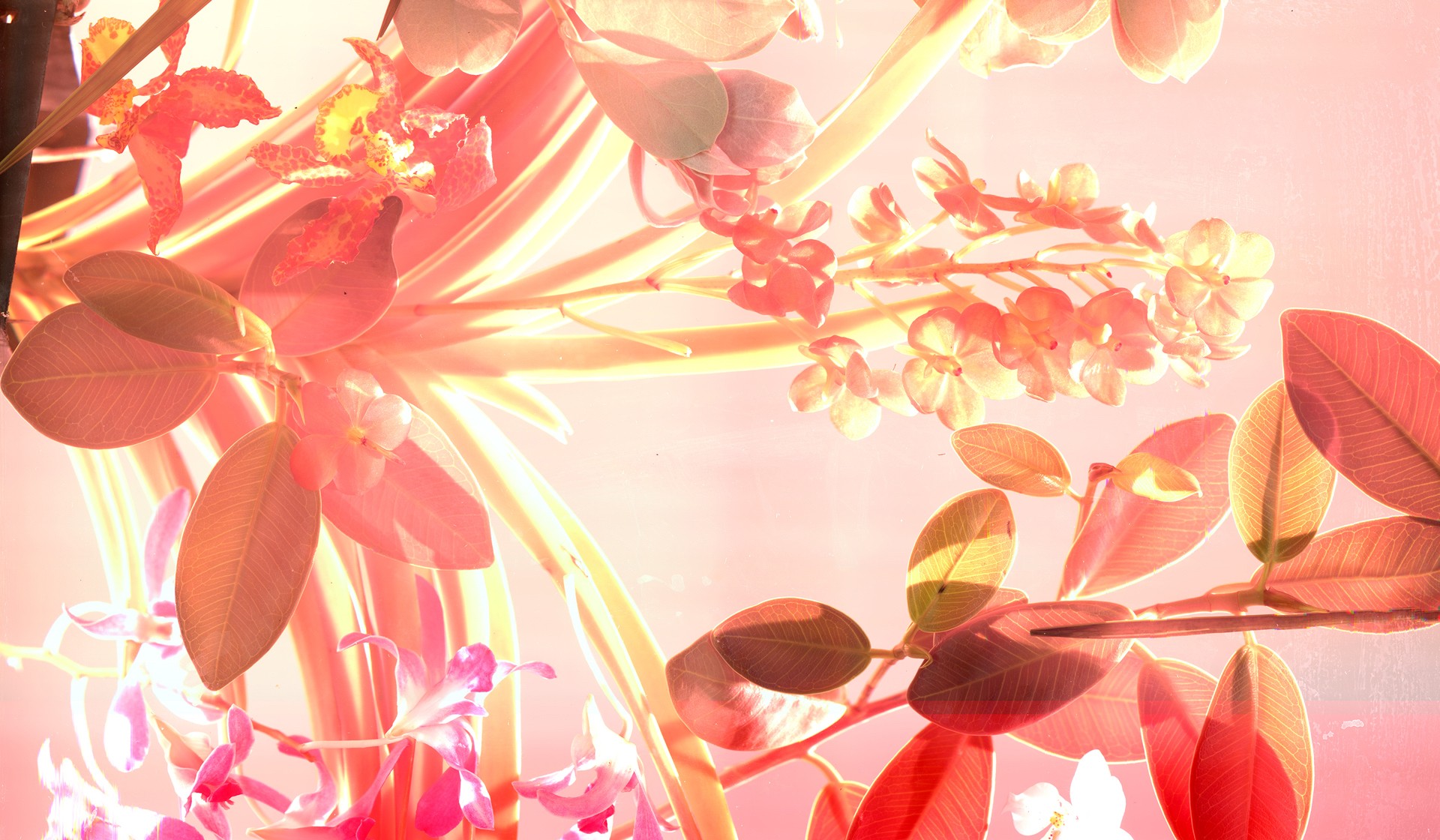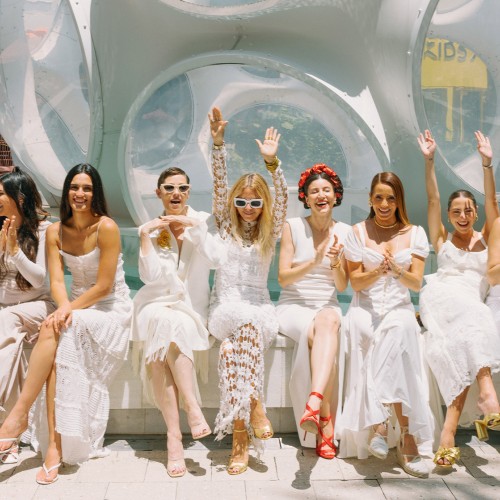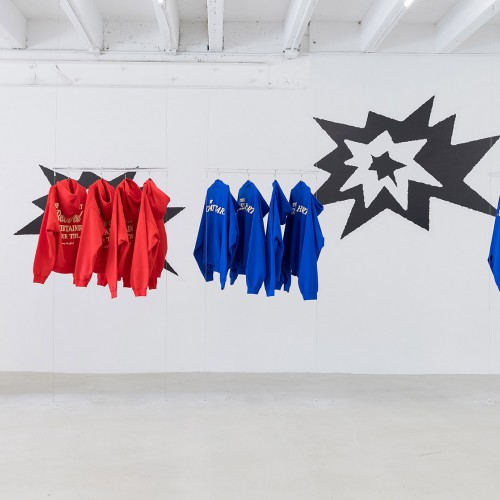Pondering Cristina Lei Rodriguez’s new large-scale commission Digitizing the Phenomena of Nature (Orchids at Sunrise), made me think about the origins of her scanned art and their connection to fashion, (something one encounters often within the Miami Design District!). I wanted to share an edited excerpt from my essay in the monograph Cristina Lei Rodriguez: Act Natural. The South Florida native has an ongoing relationship with fusing the natural world with one of retail. Let’s go back to 2008:
In The Glamour of Things, art historian Max Hollein writes, “The aesthetics of consumer goods, the glamour of things, creates a synthetic environment of permanent desire and of wanting to be desired.” Rodriguez has positioned her work this way. In her college years, she worked for various clothing boutiques, assembling and displaying products and fashions, work that afforded her a certain amount of creative license, and a skill set that would later be used to install her own sculptures within a fashion-forward platform. For my 2004 exhibition Gypsy’s Curse in the Miami Design District she presented a sculptural installation locked inside a glass vitrine. The case was filled with pastel Formica pillars and piled with wedding cake decor from Diamond’s, a now defunct Miami Latin American craft shop.
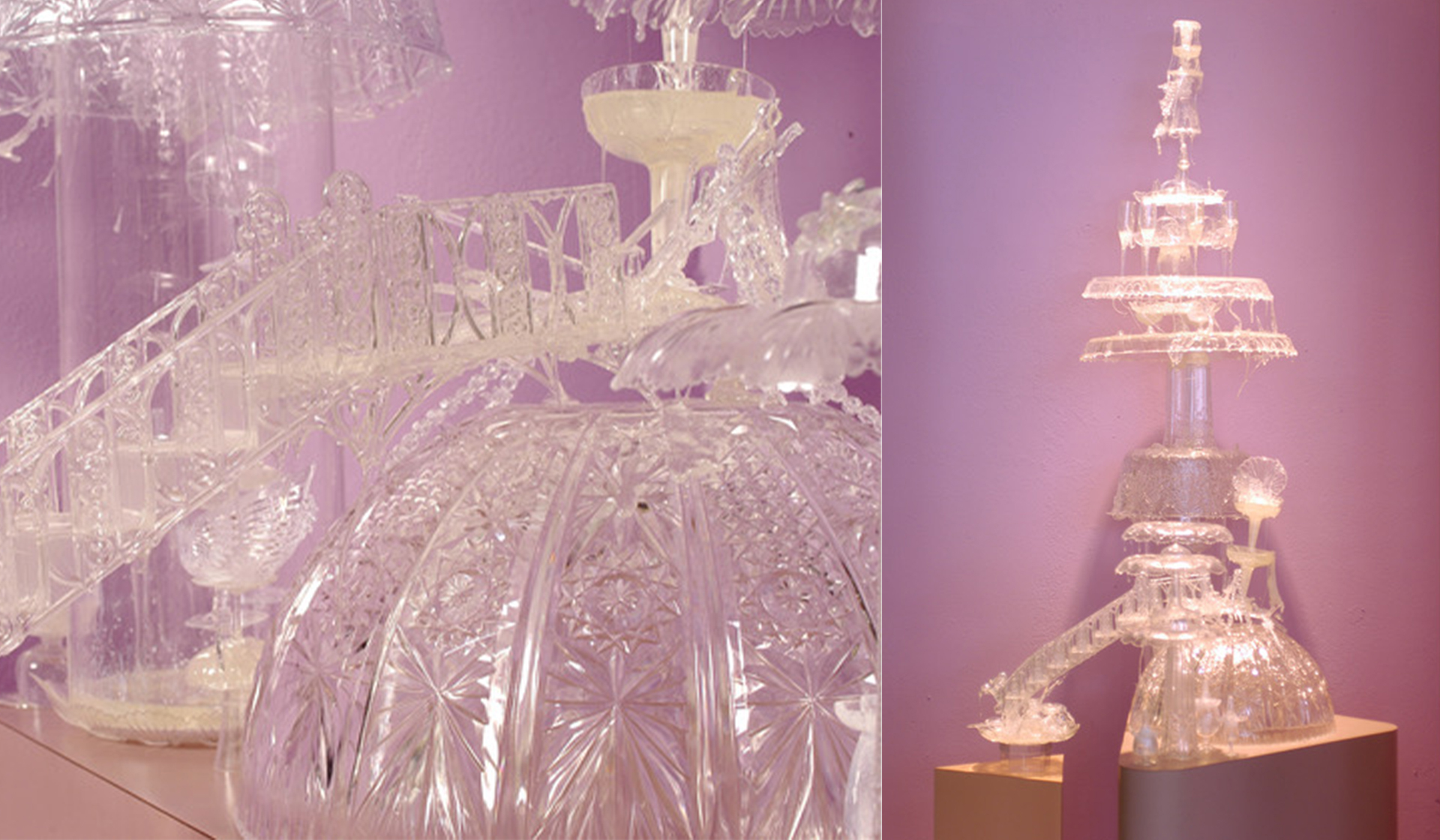
Rodriguez’s most significant window display––and the closest to actual merchandising––was made for American Apparel in 2013. Rodriguez was asked to design a Parisian storefront using textiles to make new sculptures and scanned works, which were placed alongside mannequins wearing the current styles for sale. The concept was to scan fabrics from American Apparel’s seasonal merchandise and print the scans onto large canvases to be displayed among the mannequins and garments. The resultant scanned works feature creased and smooshed sweaters, chains, fabric, and the familiar black-and-white composition notebook pattern. Original sculptures made for the project included a purse embellished and painted by the artist. Artist, designer, and architect Frederick Kiesler’s early writings and practice elevate the importance of the department store windows for their ability to incorporate art, sculpture, and architecture but emphasize the importance of the space itself, an animated stage ready to captivate the public.
After making her fashion-inspired sculptures in 2008, Rodriguez began using an office scanner to scan objects. At first, she utilized her personal collection of costume jewelry and scattered them on the scanner’s glass plate to create and print the digital images of direct representations of her baubles and chains. The resultant works resemble photograms, the product of a camera-less technique of capturing images with light-sensitive paper, a process utilized in the early twentieth century by the artist Man Ray.
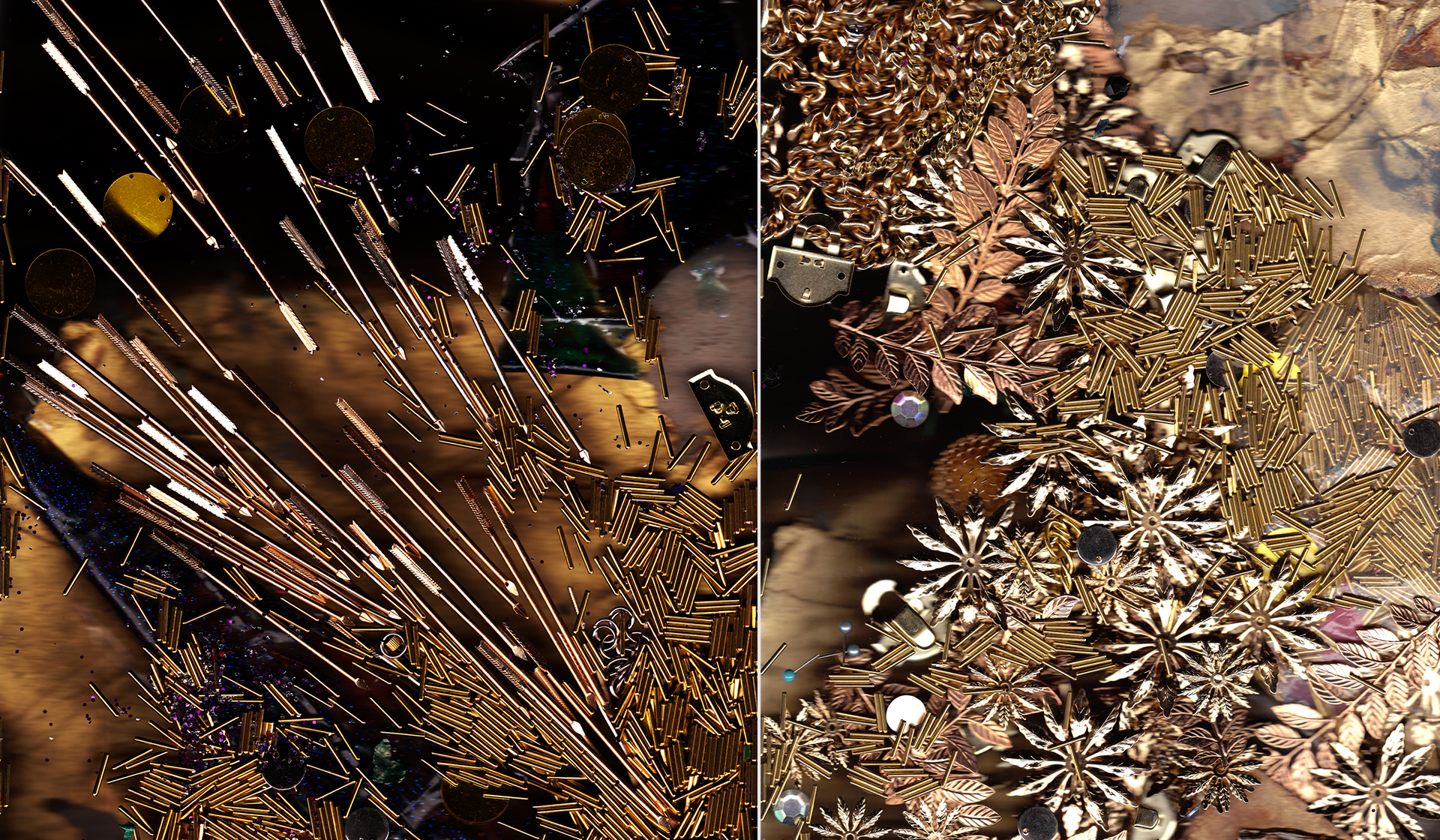
The first of Rodriguez’s scanned works are understated but force the items into a two-dimensional facsimile vacant of true depth. Rodriguez then began incorporating small rocks, shells, and tiles, and mixed them with gems, metal, fabric, and dirt. Using these in scans created artificial qualities that give some attitude to the organic elements. The paper and canvas prints become like advertisements in their staging, however free from digital alterations or filters. The canvases are both beautifully abstract in nature and somehow familiar.
This recent work, her largest window displays to date, fully embrace the neighborhood, a destination for art, design, and community, while continuing Rodriguez’s own engagement with flowers, typically noted in her earliest artwork, many, which can be found in art collections across Miami. The selection of orchids that Rodriguez digitally scanned emphasizes tropical plant life in South Florida but also brings to mind the care and gentleness required to cultivate them domestically, such as in a greenhouse. The scale and quantity of these images also amplify the exoticness, rarity, and luxe status of orchids, something the Victorians cherished and we continue to do so today. Fused on glass and attached to retail boutiques, Rodriguez is fully aware about public space and moments of desire, whether behind glass or while window shopping from the street.
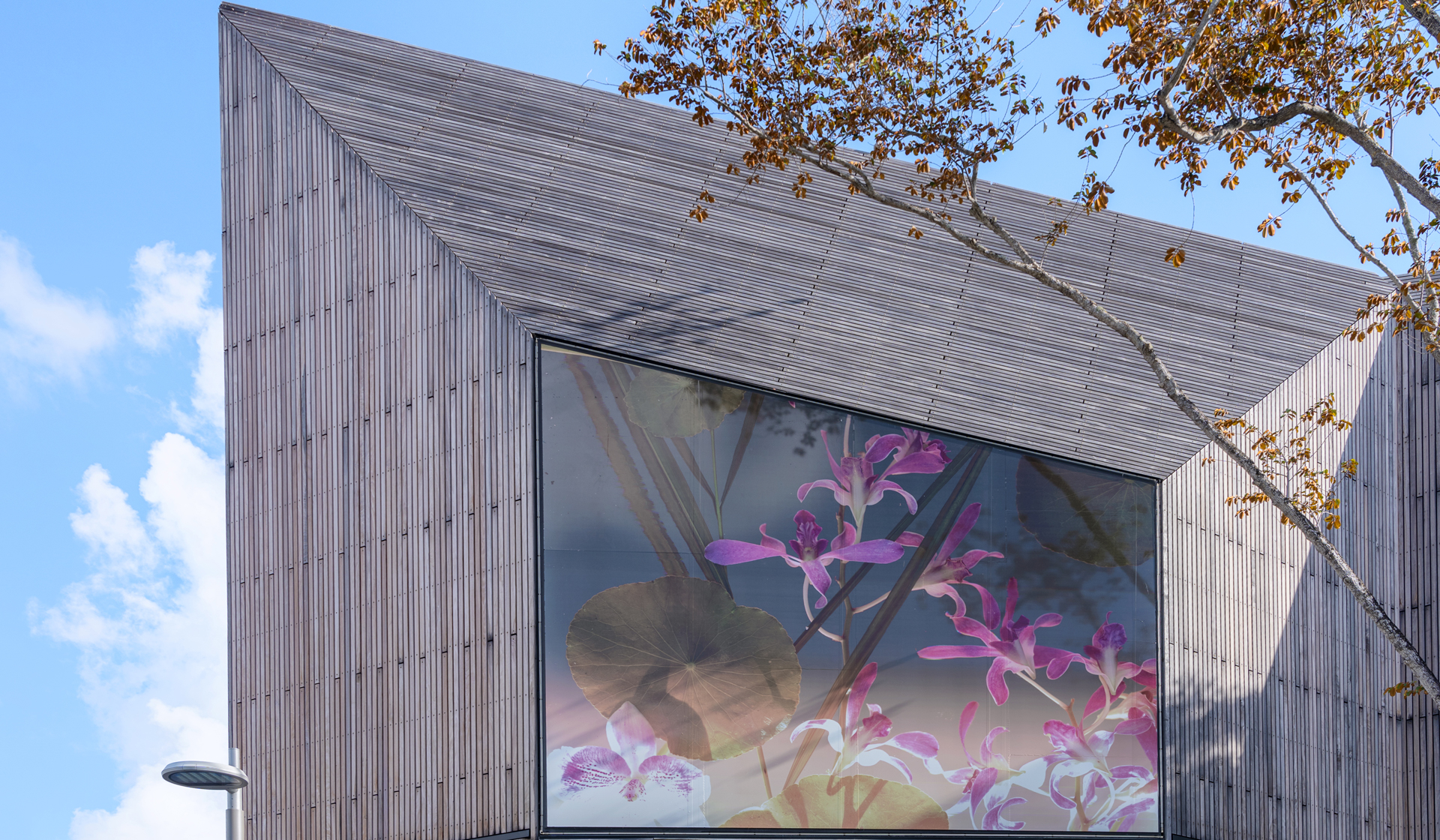
Cristina Lei Rodriguez’s Digitizing the Phenomena of Nature (Orchids at Sunrise) is displayed on the second-floor windows of the Miami Design District’s Reiulf Ramstad Arkiteckter-designed building.
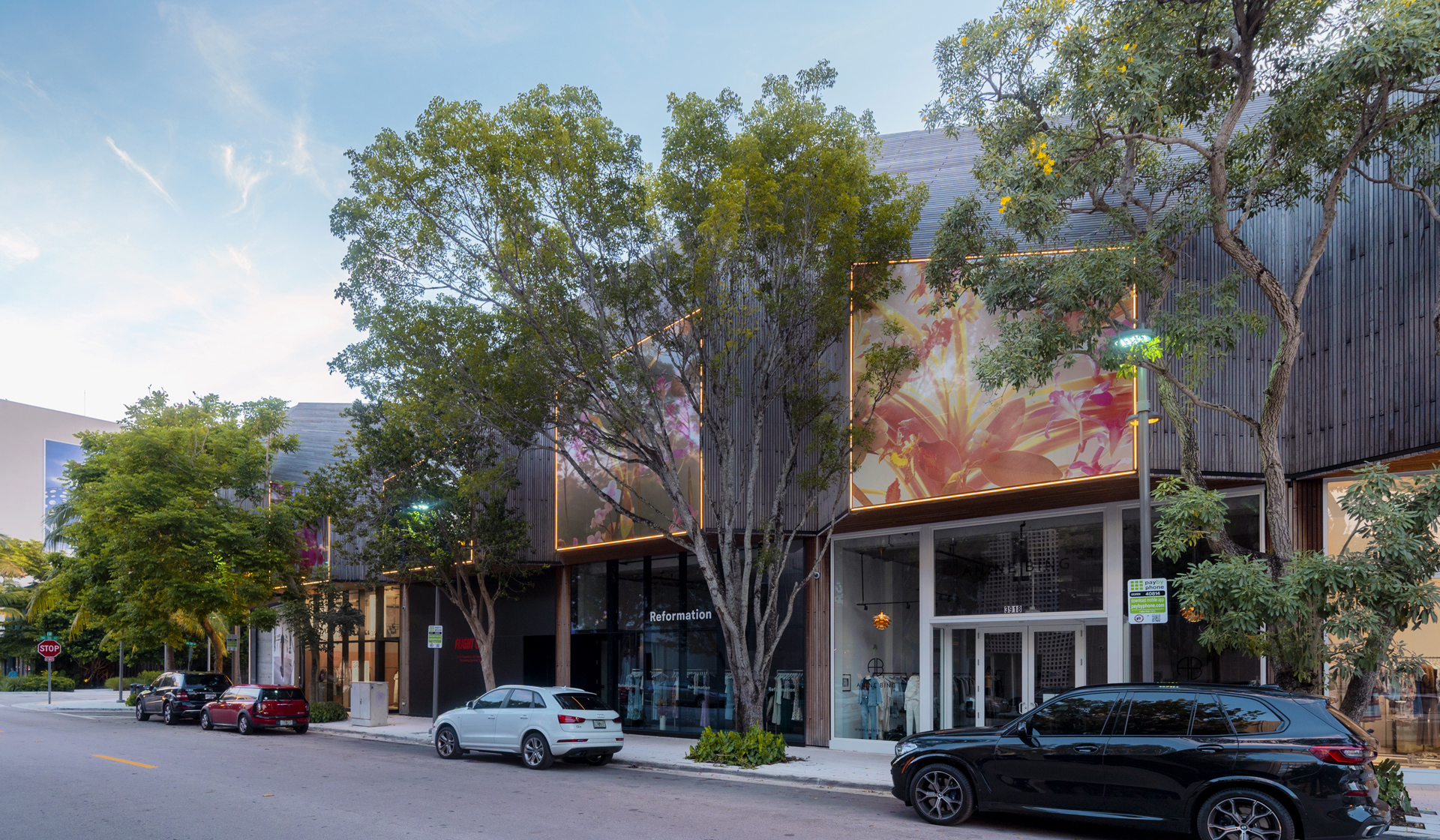
José Carlos Diaz is the Chief Curator of the Andy Warhol Museum in Pittsburgh.

